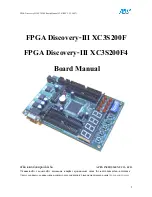
Chapter 5 -- Measurement of Small Signals -- Measurement System Model and Physical Limitations
5-4
For an R
m
of 10
7
ohms, an error < 1% demands that R
in
must be > 10
9
ohms. PC board leakage, relay
leakage, and measurement device characteristics lower R
in
below the desired value of infinity.
A similar problem is the finite input leakage current I
in
into the voltage measuring circuit. It can be leakage
directly into the input of the voltage meter, or leakage from a voltage source (such as a power supply) through
an insulation resistance into the input. If an insulator connected to the input has a 10
12
ohm resistance
b15 volts and the input, the leakage current is 15 pA. Fortunately, most sources of leakage current
are DC and can be tuned out in impedance measurements. As a rule of thumb, the DC leakage should not
exceed the measured signal by more than a factor of 10.
The PCI4 uses an input amplifier with an input current of around 5 pA. Other circuit components may also
contribute leakage currents. You therefore cannot make absolute current measurements of very low pA
currents with the PCI4. In practice, the input current is approximately constant, so current differences or AC
current levels of less than one pA can often be measured.
Voltage Noise and DC Measurements
Often the current signal measured by a potentiostat shows noise that is not the fault of the current
measurement circuits. This is especially true when you are making DC measurements. The cause of the
current noise is noise in the voltage applied to the cell.
Assume that you have a working electrode with a capacitance of 1
µ
F. This could represent a passive layer on a
metal specimen. The impedance of this electrode, assuming ideal capacitive behavior, is given by
Z = 1/j
ω
C
At sixty Hertz, the impedance magnitude is about 2.5 k
Ω
.
Apply an ideal DC potential across this ideal capacitor and you get no DC current.
Unfortunately, all potentiostats have noise in the applied voltage. This noise comes from the instrument itself
and from external sources. In many cases, the predominant noise frequency is the AC power line frequency.
Assume a realistic noise voltage, V
n
, of 10
µ
V (this is lower than the noise level of most commercial
potentiostats). Further, assume that this noise voltage is at the US power line frequency of 60 Hz. It will create
a current across the cell capacitance:
I = V
n
/Z
≈
4 nA
This rather large noise current will prevent accurate DC current measurement in the pA ranges.
In an EIS measurement, you apply an AC excitation voltage that is much bigger than the typical noise voltage,
so this is not a factor.
Shunt Resistance and Capacitance
Non-ideal shunt resistance and capacitance arise in both the cell and the potentiostat. Both can cause
significant measurement errors.
Parallel metal surfaces form a capacitor. The capacitance rises as either metal area increases and as the
separation distance between the metals decreases.
Wire and electrode placement have a large effect on shunt capacitance. If the clip leads connecting to the
working and reference electrodes are close together, they can form a significant shunt capacitor. Values of 5 pF
Содержание PCI4/300 Potentiostat/Galvanostat/ZRA
Страница 3: ...i...
Страница 7: ......
Страница 12: ...Chapter 1 Introduction Potentiostat Schematic Diagram 1 3 Figure 1 1 PCI4 Analog Circuits in Potentiostat Mode...
Страница 15: ...Chapter 1 Introduction Notational Conventions 1 6...
Страница 42: ...Chapter 5 Measurement of Small Signals Floating Operation 5 8...
Страница 59: ...Appendix F CE Certificate Certificate of Conformance 6 17 Appendix F CE Certificate Certificate of Conformance...
Страница 60: ...Appendix F CE Certificate Certificate of Conformance 6 18...
















































